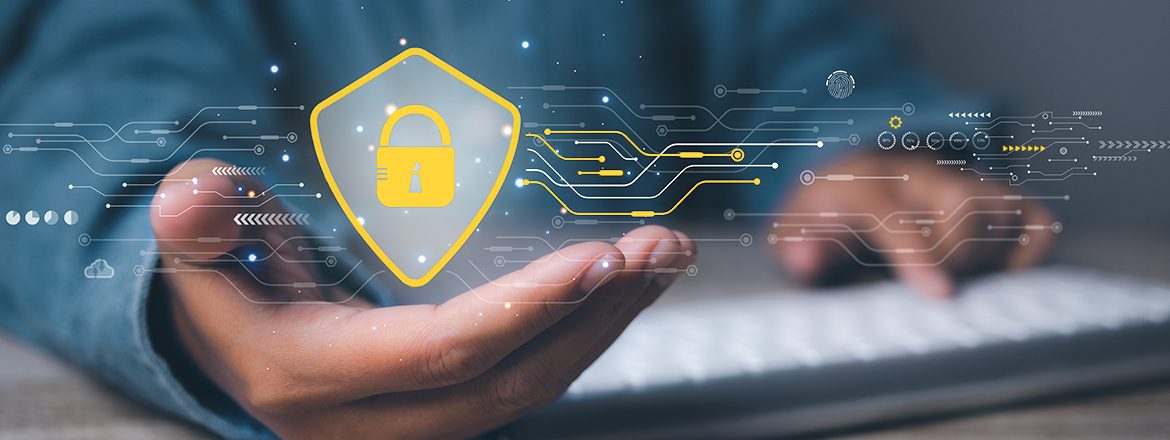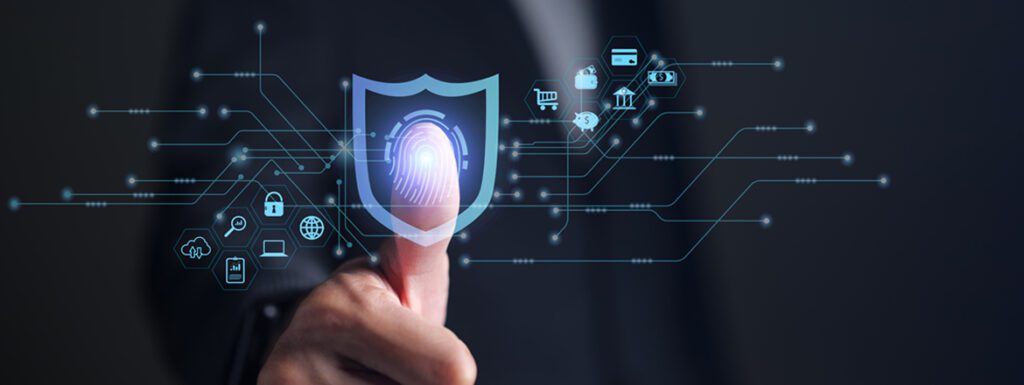Cybersecurity has never been more critical with the increasing use of technology in our day-to-day lives. Cyber attacks are becoming more frequent, sophisticated, and costly.
By 2025, global businesses will face an annual fiscal impact of approximately $10.5 trillion due to cybercrime, marking a significant increase from the $3 trillion recorded in 2015. Organizations must adopt a comprehensive approach to cybersecurity risk management to address this growing threat.
This article will explore cybersecurity risk management and provide essential strategies for building a robust cybersecurity risk management program.
Understanding Cybersecurity Risk Management
Effective cybersecurity risk management is essential for safeguarding sensitive data and maintaining a solid security posture. Organizations must implement a robust risk management framework to identify and mitigate potential risks. They can protect information systems by adopting best practices and the National Institute of Standards and Technology (NIST) Cybersecurity Framework. Recognizing that cyber threats are constantly evolving is crucial, making risk assessment an ongoing process. Organizations can proactively address high-risk areas, protect confidential information, and align their efforts with key business objectives by prioritizing cybersecurity risk management.
The Role of Cybersecurity Risk Management in Organizations
The role of cybersecurity risk management in organizations extends beyond simply protecting against cyber attacks. It is crucial to ensure organizations can effectively respond to and recover from such attacks. Identifying and managing risks helps maintain the confidentiality, integrity, and availability of information systems. Additionally, it supports compliance with regulatory requirements and industry standards. Collaboration between IT teams, management, and other stakeholders is essential to address the organization’s unique risk landscape. Cybersecurity risk management is a repeatable process that safeguards the organization’s operations and protects its reputation and financial well-being. Amidst the multitude of tasks, vulnerabilities, and technologies, risk management is a critical tool in guiding prioritization within the cybersecurity domain.
Risk management goes beyond the conventional approach of defending against cyber threats. It serves as a strategic compass that helps organizations navigate cybersecurity by evaluating potential risks and making informed decisions on where to allocate resources. As organizations strive to maintain their information systems’ confidentiality, integrity, and availability, risk management becomes the linchpin in ensuring a balanced and efficient cybersecurity strategy.
In times of limited resources, identifying and assessing risks enables organizations to focus their efforts on addressing the most significant and impactful threats. This involves systematically analyzing vulnerabilities, potential attack vectors, and the potential consequences of a security breach. By understanding the risk landscape, organizations can prioritize tasks and allocate resources where they are most needed, creating a more targeted and effective cybersecurity approach.
How do you Build a Robust Cybersecurity Risk Management Strategy?
Building a solid cybersecurity risk management strategy involves several key steps. Start by identifying and classifying your digital assets. Conduct a thorough risk assessment to prioritize risks. Foster a culture of risk management throughout the organization. Implement effective mitigation measures and regularly monitor their effectiveness.
Identifying Digital Assets and Potential Threats
To effectively manage cybersecurity risks, it is crucial to identify and understand all digital assets within an organization. This includes hardware, software, data, and network infrastructure. By conducting a comprehensive inventory, the attack surface can be assessed, allowing for a better understanding of potential threats. These threats may include malware, phishing attacks, insider threats, and emerging technologies or business operations risks. It is essential to classify assets and threats based on their criticality and potential impact on the organization. This classification enables organizations to prioritize cybersecurity efforts and implement appropriate risk management strategies.
Assessing and Prioritizing Risks
To effectively manage cybersecurity risks, assessing and prioritizing them is crucial. A comprehensive risk analysis should be conducted to determine the likelihood and potential impact of identified threats. Risks should then be prioritized based on their level and the organization’s tolerance for risk. It is essential to consider the organization’s compliance requirements and legal obligations. Involving key stakeholders, such as IT teams, legal, compliance, and business units, in the risk assessment process ensures a comprehensive approach. The risk assessment should also be continuously monitored and updated as new threats and vulnerabilities emerge.
Creating a Culture of Risk Management
Creating a risk management culture within an organization is essential to address cybersecurity risks effectively. By fostering awareness and accountability throughout the organization, promoting a proactive approach toward risk management becomes more accessible. Training and educating employees on cybersecurity best practices and the importance of risk management further strengthen the organization’s defenses. Encouraging reporting of potential security incidents and near misses facilitates continuous improvement, enabling the identification and mitigation of vulnerabilities. Integrating risk management into processes, policies, and decision-making frameworks ensures that it becomes a natural and repeatable process across the organization. Recognizing and rewarding individuals and teams that demonstrate exceptional risk management practices reinforces the importance of this crucial discipline.
Implementing Mitigation Measures
To effectively mitigate identified cybersecurity risks and protect digital assets, it is crucial to implement robust security controls. Organizations can establish a vital cybersecurity risk management process by adopting industry best practices, such as those outlined in the NIST Cybersecurity Framework or relevant standards. Regularly updating and patching software and systems helps address known vulnerabilities while implementing strong access controls and authentication mechanisms to prevent unauthorized access. Developing and maintaining an incident response plan allows for effective response and recovery from security incidents. This comprehensive approach ensures the resilience of the organization’s operations and minimizes the impact of cyber threats.
Monitoring and Reviewing the Effectiveness of Controls
Regularly monitoring and reviewing the effectiveness of implemented security controls is crucial for effective cybersecurity risk management. By using security monitoring tools and techniques, organizations can promptly detect and respond to potential security incidents as well as identify risk manifestation. Conducting periodic audits and assessments helps ensure compliance with established security standards. Furthermore, learning from incidents and emerging threats enables continuous improvement of security controls. Establishing a feedback loop between security teams and stakeholders is essential to effectively address gaps and enhance powers. This approach ensures that cybersecurity risk management remains an ongoing and repeatable process within the organization.
Ensuring Cyber Hygiene and Compliance with Regulations
It is crucial to prioritize cyber hygiene and compliance with regulations. His involves practicing cyber hygiene by regularly updating software, implementing solid passwords, and conducting security awareness training. Staying informed about evolving cybersecurity regulations and compliance requirements is also essential. Establishing a risk management strategy that aligns with industry-specific regulatory frameworks, such as PCI DSS or HIPAA, is necessary. Regularly assessing and reviewing compliance with regulations helps avoid penalties and reputational damage. Collaboration with legal and compliance teams ensures the organization meets all requirements.
The Importance of Security Awareness Training
Security awareness training plays a vital role in educating employees about potential cybersecurity risks and best practices. By training employees to recognize and report phishing attempts, suspicious emails, and other common cyber threats, organizations can strengthen their defense against attacks. It is essential to regularly update training materials to address emerging threats and new attack techniques. Additionally, fostering a security-conscious culture that emphasizes the role of every individual in maintaining cybersecurity is crucial. Incorporating security awareness training into employee onboarding and ongoing professional development programs ensures a well-informed and vigilant workforce.
Key Cyber Risk Management Frameworks
Effective cybersecurity risk management requires organizations to adopt recognized frameworks that provide structured guidelines for assessing and mitigating cyber risks. The NIST CSF (National Institute of Standards and Technology Cybersecurity Framework) offers a comprehensive framework for managing cybersecurity risks and is widely used in the United States. ISO 27001 is the international standard for information security. It provides a systematic approach to information security management. By adopting these frameworks, organizations can align with industry best practices and protect their key business objectives. In addition to the NIST CSF and ISO 27001, there are two other prominent frameworks that organizations can consider integrating into their cyber risk management strategy: CIS FAIR (Center for Internet Security – Factor Analysis of Information Risk) and COBIT (Control Objectives for Information and Related Technologies).
An Overview of the NIST CSF
The National Institute of Standards and Technology Cybersecurity Framework is a valuable resource for organizations looking to enhance their cybersecurity risk management process. It provides a flexible framework that can be tailored to meet an organization’s specific needs. By following the NIST CSF, organizations can develop a comprehensive risk management strategy that addresses critical business objectives and aligns with other cybersecurity standards and frameworks. This framework promotes effective communication between security teams and stakeholders by providing a common language to discuss risk identification, protection, detection, response, and recovery.
Insights into ISO 27001
ISO 27001 offers a systematic approach to managing information security risks. It emphasizes the importance of risk assessment and treatment, promoting the implementation of security controls to protect sensitive information. Compliance with the ISO 27001 series demonstrates a commitment to data security best practices and provides a framework for establishing, implementing, maintaining, and continually improving an information security management system. By adopting ISO 27001, organizations can effectively manage their cybersecurity risk, safeguard their assets, and ensure information confidentiality, integrity, and availability.
Understanding CIS FAIR
The Center for Internet Security’s Factor Analysis of Information Risk (CIS FAIR) framework focuses on risk quantification. It provides a structured methodology for assessing and analyzing information security risks. CIS FAIR enables organizations to express cyber risk in monetary terms, facilitating better decision-making by executives and stakeholders. By leveraging FAIR, organizations can prioritize risk mitigation efforts based on a cost-benefit analysis, ensuring that resources are allocated efficiently to address the most significant threats.
Exploring COBIT
COBIT (Control Objectives for Information and Related Technologies) is a framework developed by ISACA for the governance and management of enterprise information and technology. COBIT provides a comprehensive set of controls and best practices that help organizations achieve their business objectives through adequate power and management of IT-related risks. It aligns IT goals with overall business goals, emphasizing the importance of risk management, control implementation, and value delivery. COBIT is particularly useful for organizations seeking to integrate IT governance and risk management into their business strategy.
The Role of Technology in Cybersecurity Risk Management
Technology plays a vital role in cybersecurity risk management, enabling organizations to effectively identify and mitigate cyber threats. Through AI and machine learning, proactive threat detection and response are more efficient than ever before keeping organizations ahead of evolving risks. Leveraging advanced technologies helps enhance an organization’s overall security posture by automating security processes improving efficiency and accuracy. By incorporating technology into the cybersecurity risk management process, organizations can stay resilient against high-risk factors and protect critical data from potential threats.
Leveraging AI and Machine Learning for Risk Management
Leveraging AI and machine learning in cybersecurity risk management processes can significantly enhance an organization’s ability to assess and address potential risks. These technologies provide more accurate and timely risk assessments by analyzing large volumes of data. AI-driven tools offer actionable insights, aiding decision-making processes. Machine learning algorithms can identify patterns that indicate cyber threats, enabling organizations to predict better and prevent attacks. Using AI and machine learning in risk management supports a proactive approach, helping organizations avoid evolving cyber risks.
Benefits of Incident Response Tools
Incident response tools are crucial in effectively detecting and responding to cybersecurity incidents. By enabling quick identification and containment of cyber threats, these tools help minimize potential damage. Real-time monitoring and analysis of security events provided by incident response tools enhance threat intelligence and enable organizations to streamline their incident-handling processes. This improves cybersecurity readiness and ensures efficient collaboration among security teams, facilitating faster incident resolution. Leveraging these tools is essential for organizations to manage cybersecurity risks effectively.
Best Practices for Ongoing Cyber Risk Assessment and Management
Regular risk assessments are crucial in identifying and prioritizing an organization’s potential risks. Organizations can ensure ongoing protection against cybersecurity threats by continuously monitoring security controls. Risk analysis allows for informed decision-making and effective resource allocation to address critical risks. Regular cybersecurity training and awareness programs promote a strong security culture within the organization. Lastly, collaboration across all levels of the organization is essential for effective cyber risk management.
Securing Tomorrow
Cybersecurity risk management is crucial to protecting your organization from potential threats and vulnerabilities. By implementing a robust strategy that includes identifying digital assets, assessing, and prioritizing risks, creating a culture of risk management, implementing mitigation measures, and monitoring the effectiveness of controls, you can significantly reduce the likelihood and impact of cyberattacks.
You can partner with Cytek to create and implement risk management solutions for your digital assets. Cytek Security is dedicated to assisting organizations in proactively addressing the latest cyber threats through exceptional advisory services, implementation support managed security services, and the establishment of autonomous cybersecurity capabilities, all delivered highly efficiently and cost-effectively.
You can upskill your employees to maintain a robust security plan in your organization. Elev8 is a leading digital skilling partner for you to secure your organization’s future. Talk to us today!




